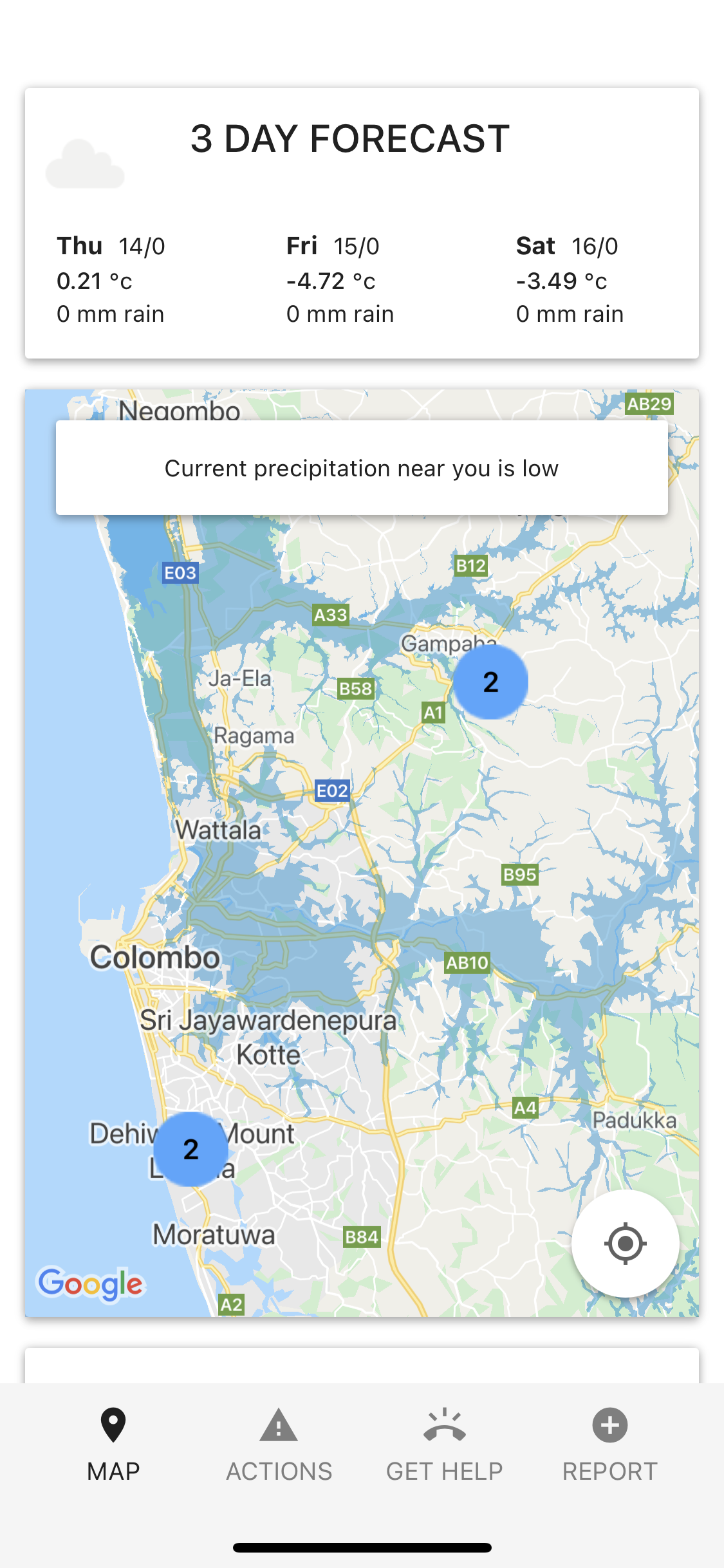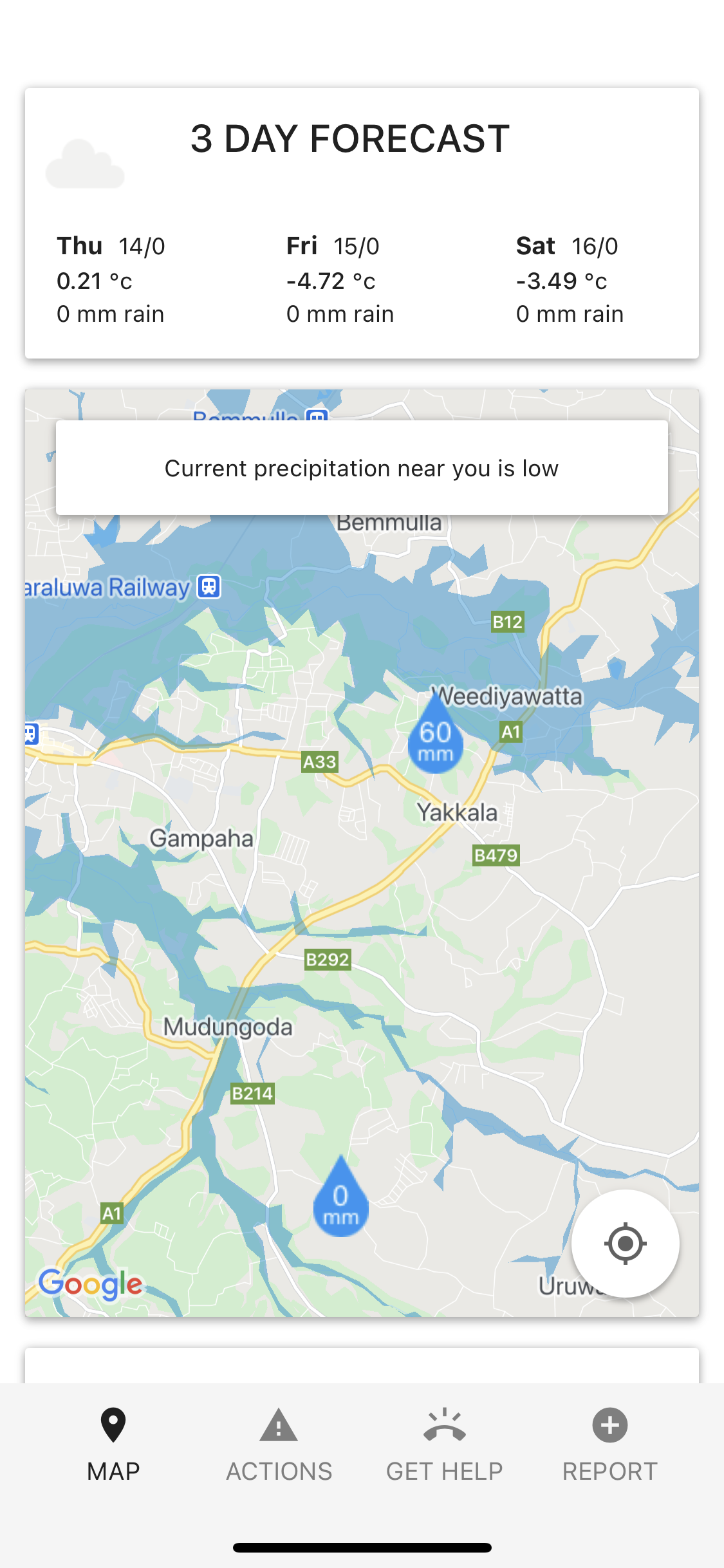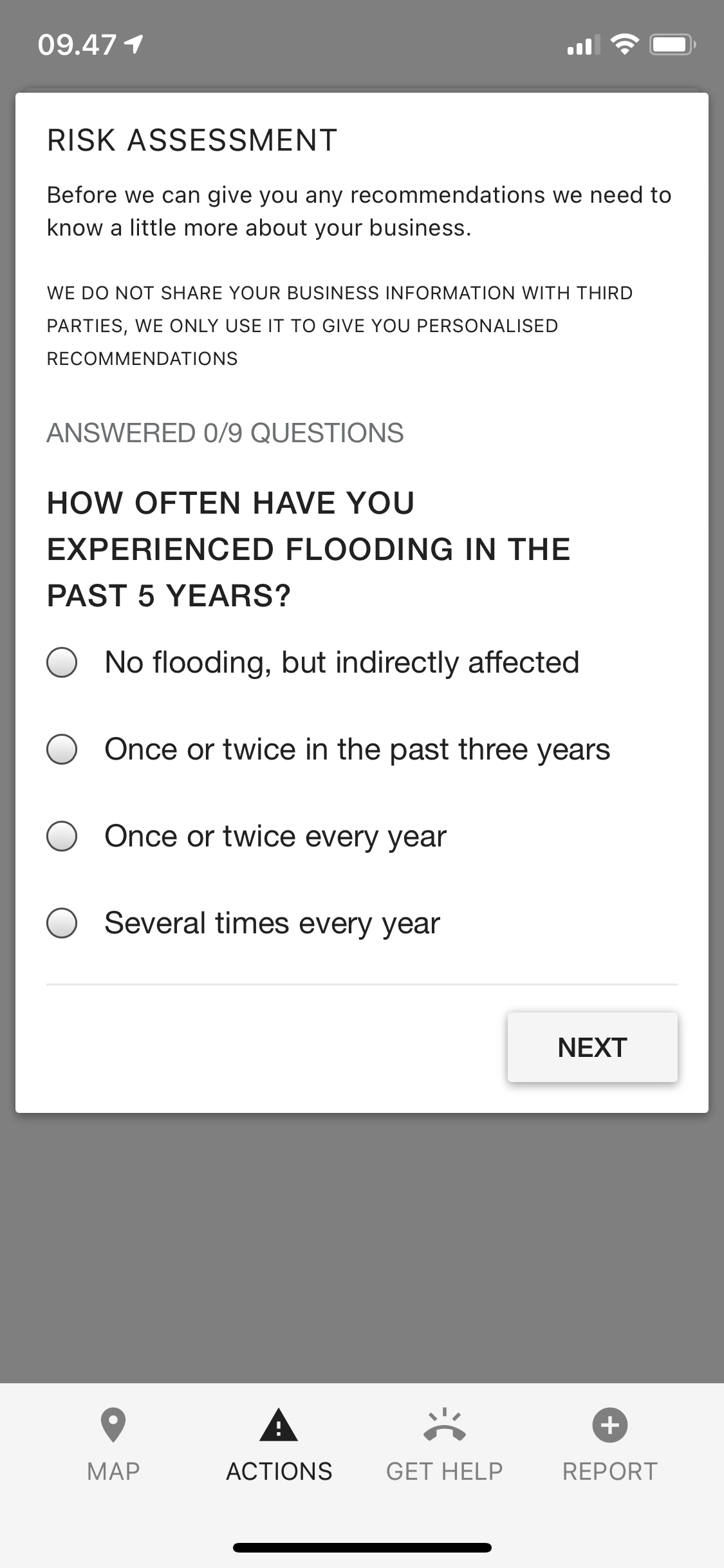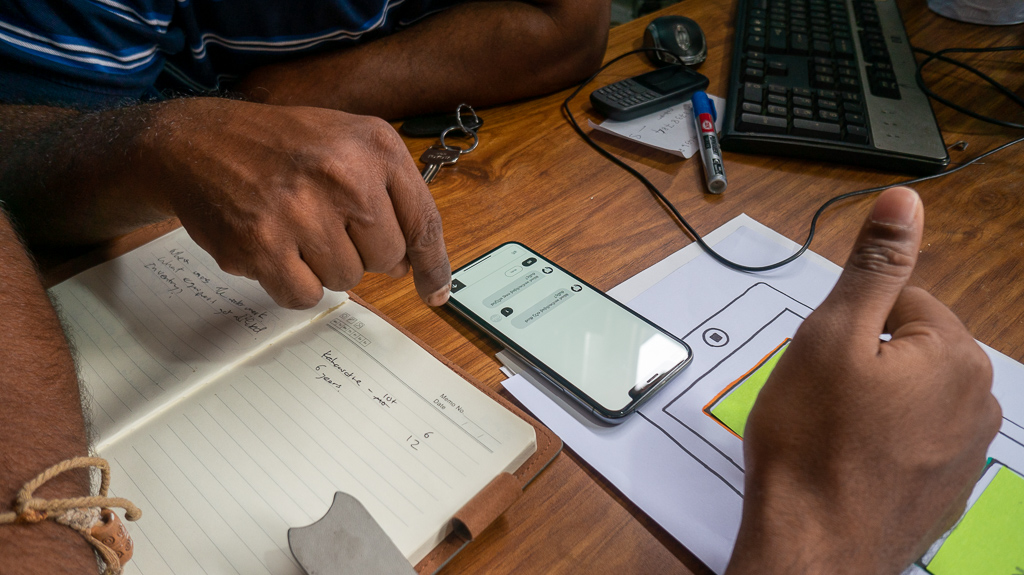Building Businesses’ Climate Resilience (BBCR) Tool
Practical Tools for Ethical Reflection in Connected Technology
- Client: UNEP DTU Partnership, ADPC, CIID, MPEnsystems, Ceylon Chamber of Commerce
- Year: 2018–2021
- Role: Research, UX, UI & Prototype Developer
- Tags: Climate Resilience, UX Research, Offline-first, React Native, Disaster Preparedness
Project Overview
TheBBCR Toolis a mobile-first application designed to help small and medium-sized enterprises (SMEs) in Sri Lanka prepare for and respond toflood-related climate risks. The tool offers accessible self-assessment, preparedness guidance, and post-disaster recovery checklists tailored to local business realities.
Launched as part of a multi-partner initiative funded by theNordic Climate Facility, the BBCR tool was co-created with local stakeholders and tested through workshops and field research across Sri Lanka. It was first presented at theColombo dissemination forumin September 2021.
Motivation & Opportunity
SMEs in Sri Lanka suffer disproportionately fromflooding and extreme weather but lack access to tailored digital tools for resilience planning. The BBCR project sought to close that gap by designing anoffline-capable, locally relevant app that could fit within daily workflows.
A baseline survey with 116 flood-affected SMEs revealed key insights: most lacked formal preparedness plans, insurance coverage was rare, and trust in abstract tools was low. This shaped a design strategy focused onclarity, simplicity, and contextual fit.
My Role & Collaboration
AsUX and prototype lead, I was responsible for the following:
Conducting in-field research with SMEs
Mapping user journeys and designing app interactions
Developing wireframes and building the React Native prototype
Facilitating co-creation sessions in Colombo, Kandy, and Galle
I worked closely with CIID, ADPC, and MPEnsystems, supported by government and private sector partners. The process was highly collaborative, with iterative feedback loops and on-site validation.
Key Interaction Features
Map” View: Displays rainfall forecasts and live precipitation alerts via GeoJSON overlays ( See
Risk Assessment: A lightweight survey to gauge SME exposure and history
Action Cards: Prioritized actions based on responses covering equipment, operations, inventory, etc.
Offline Reporting: Ability to log rainfall, damages, or incidents offline and sync later
Research & Exploration
Our process combined:
Ethical theory reviews(virtue ethics, care ethics, capabilities approach)
Founder interviewsand observations of startup team habits
Role-play testingwith design students and early-stage tech teams
We also studied analogues like serious games, bowtie risk tools, and speculative design workshops. A key insight:simple visuals and physical engagementoutperformed text-heavy forms or abstract prompts.
Design Principles
Mobile-first.
Offline-firstwith SQLite storage and delayed sync.
Minimal data entryto reduce friction.
Visual languageover heavy text (icons, progress bars, cards)
Research & Testing
We ran three weeks offield research and co-creationacross SMEs and agencies, capturing needs, workflows, and pain points. When COVID hit, we pivoted toremote testing, relying on translated prototypes and async feedback from partners.
In the2019 Validation Workshop, SMEs and stakeholders confirmed the tool's value. They helped guide feature prioritization including a strong push fortrilingual supportand integration pathways via banks, trade groups, and insurers.
Technical Implementation
The prototype was built using the following:
React Native(for cross-platform reach)
Redux(for state handling)
SQLite(for local data caching)
Alightweight data sync systemthat queued submissions until connectivity resumed
We focused on compatibility withlow-end Android devicesandvariable connectivity environments.
Outcomes & Impact
We launched apilot-ready MVPand presented it at theColombo Forumin 2021. The app was used byover 50 SMEs, with strong feedback on its clarity and practicality. Government ministries and chambers expressed interest in further deployment and plan to extend the model toBangladesh and Myanmar.
Reflection
What I'm proud of:
Delivering a working,impact-driven productin a complex, resource-constrained context
Designing foroffline-first, non-Western, real-world users
Creatinga tool that SMEs could use within 10 minutes, even under stress
What I’d improve:
Integratereal-time flood data APIs
Addpeer knowledge sharingor alert systems between businesses
Earlier planning forregional scale-up and localization

bbcr_01
“Map” view showing the 3-day flood forecast (Thu–Sat temperatures and 0 mm rain) above a Google map centered on the user’s location in Copenhagen, with a “Current precipitation near you is low” alert banner.

bbcr_02
Regional map of Sri Lanka under the “Map” tab with clustered sensor markers (“2”) and a persistent low-precipitation notification, illustrating GeoJSON rainfall overlays.

bbcr_03
Detailed precipitation overlay map showing point measurements (e.g. “60 mm” and “0 mm”) beneath the “Current precipitation near you is low” banner, demonstrating dynamic rainfall data visualization.

bbcr_04
“Risk Assessment” modal under the “Actions” tab prompting the SME user with “How often have you experienced flooding in the past 5 years?” and four radio-button options.

bbcr_05
“Risks to Your Business” summary card showing Low/Medium/High risk categories with corresponding icons for Equipment, Employees, Premises, Inventory, and Operations, plus collapsible Survey Results and financing recommendations.

bbcr_06
“Report” tab forms: a “Set ‘Sensor’ Location” card with latitude/longitude inputs and “Set Location” button, an “Add New Rain Data” card for submitting mm values, and a “History” card listing past entries (e.g. 250 mm on 28 Dec 2020).

bbcr_07
In-field user testing session: an SME participant at a desk pointing to the prototype on an Android phone beside a notebook and hand-drawn app wireframes, illustrating the co-creation workshop setup.
